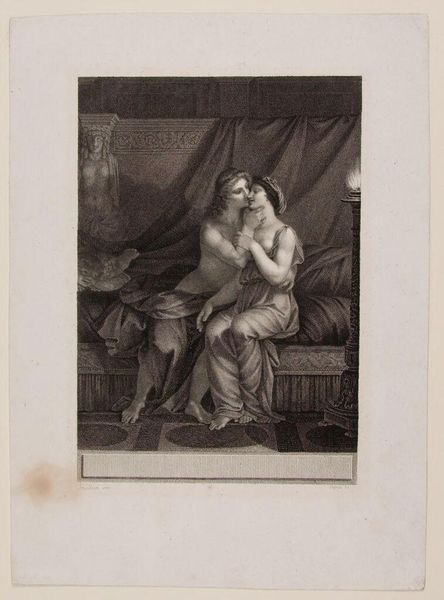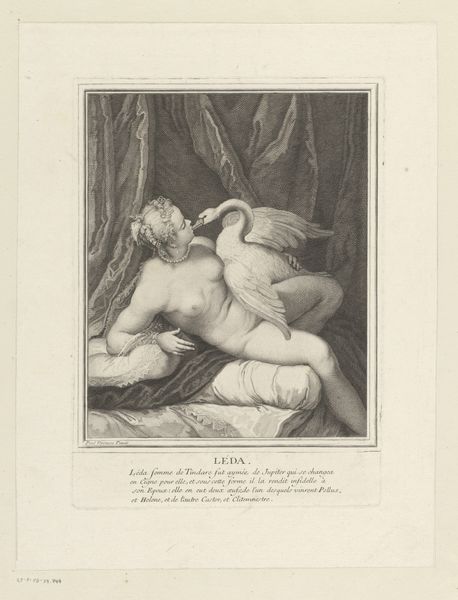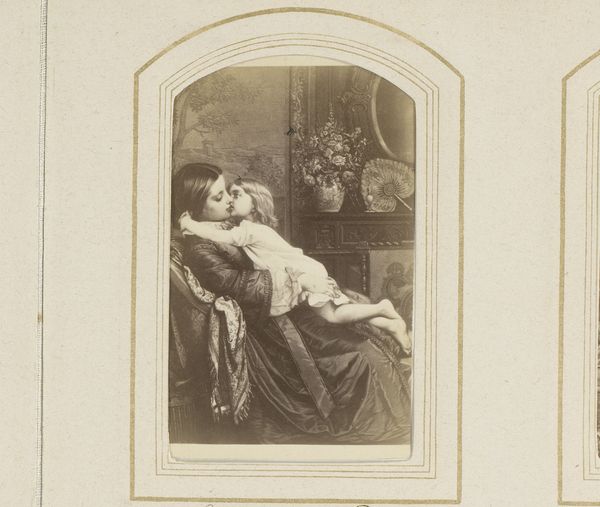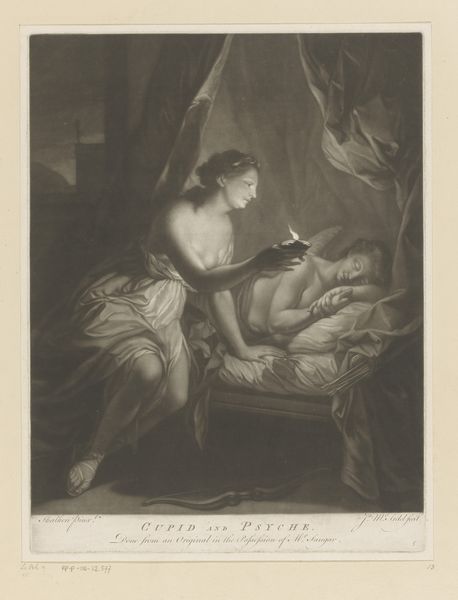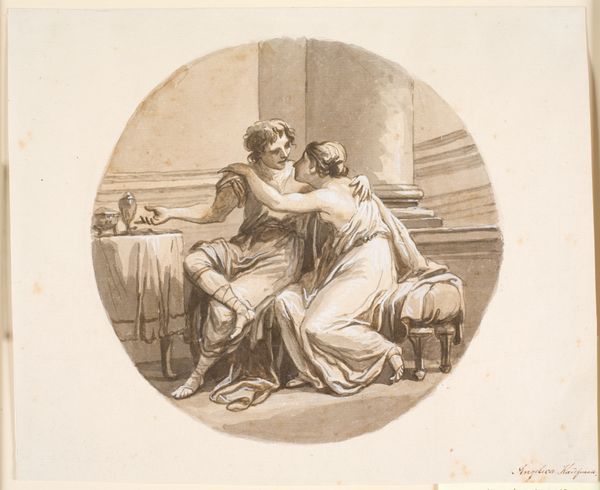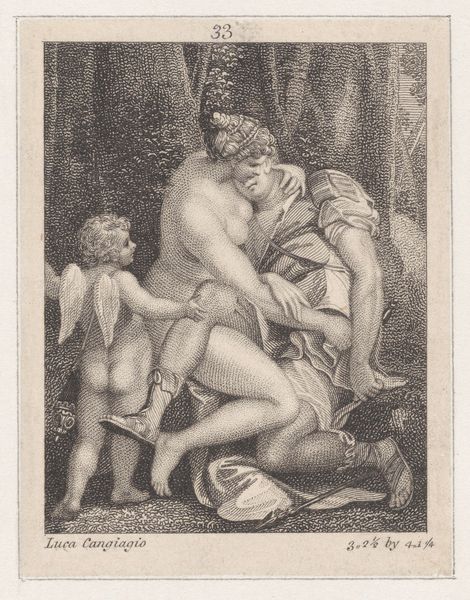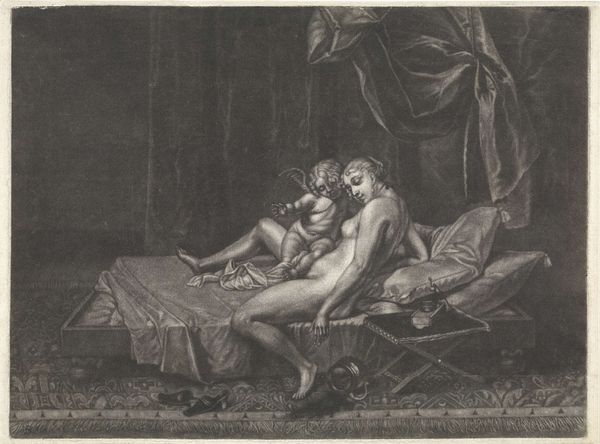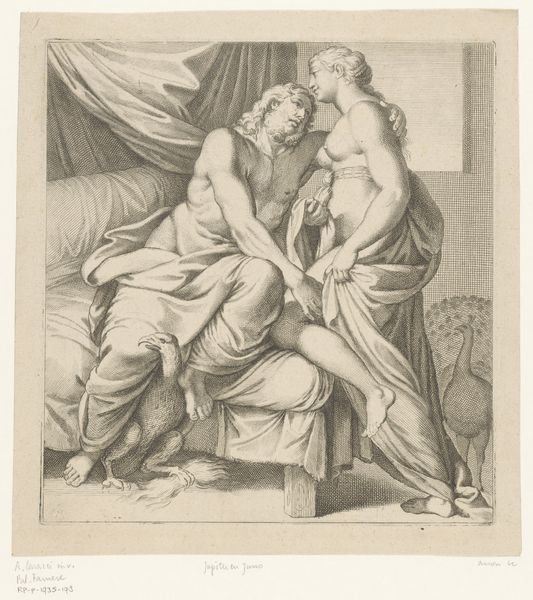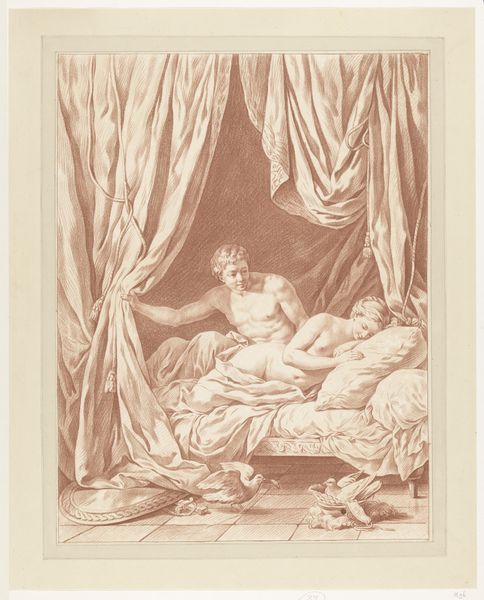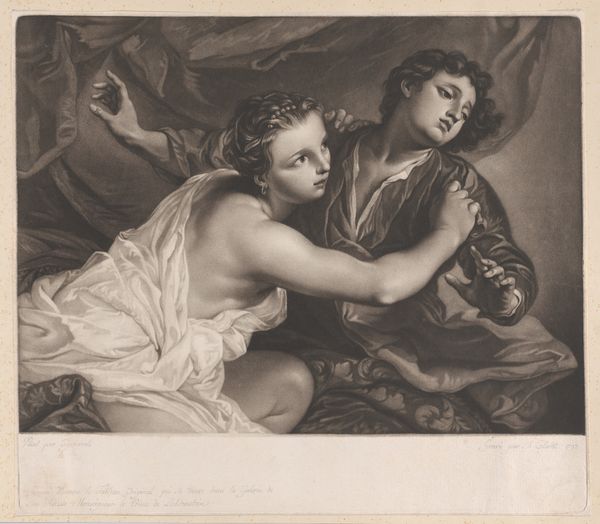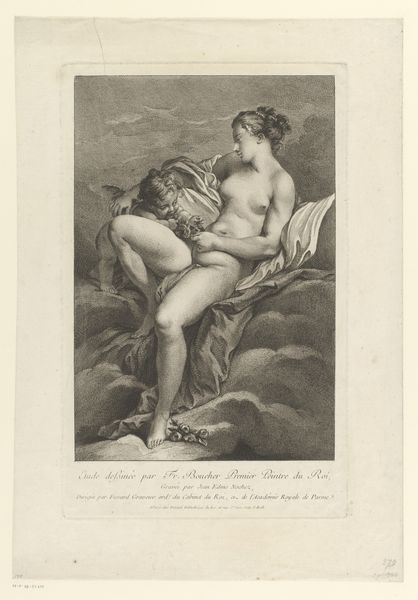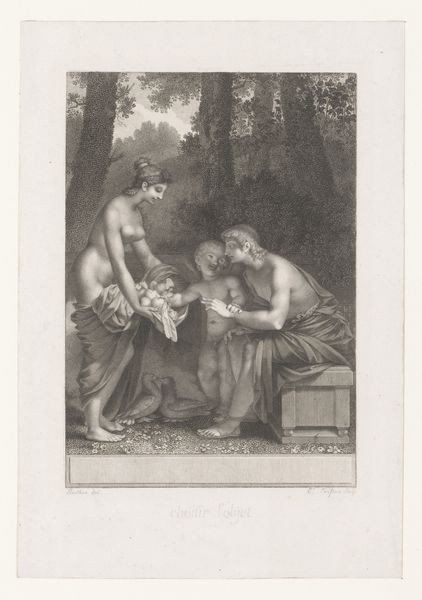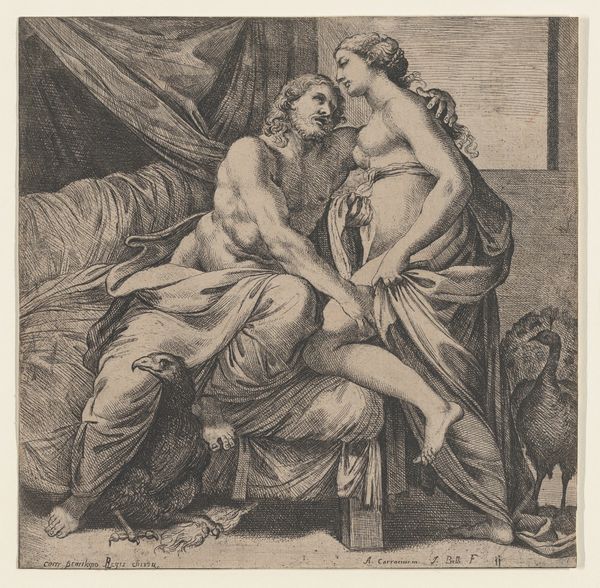
engraving
#
figuration
#
romanticism
#
genre-painting
#
nude
#
engraving
#
erotic-art
Dimensions: height 275 mm, width 188 mm
Copyright: Rijks Museum: Open Domain
Curator: I find this image intriguing. Jacques Louis Copia created this engraving in 1797, a piece titled "Verliefd paar zittend op bed", or "Loving Couple Sitting on Bed." The work falls into the realm of romanticism and deals with themes of love and intimacy. Editor: My first impression is of a hushed scene, draped in shadows and muted tones. There's a palpable sense of quiet intensity radiating from the entwined figures. The engraver captured subtle gradients beautifully. Curator: The late 1790s in Europe were turbulent times, experiencing the throes of revolution and political upheaval. Erotic art like this offers an escape. Note how the couple and the scene itself take visual cues from classical sculpture. Such art both reflects and perhaps idealizes shifting gender and sexual mores amid social upheaval. Editor: Exactly. Consider the visual interplay of the bodies, how they lean towards one another. Notice the contrast between the woman's flowing robe and the male figure's bare chest. It creates a visual focus that directs our eyes towards the point of contact between their lips, reinforcing the central theme of intimate love. Curator: These images often found an audience among the rising bourgeoisie, a demographic with increased leisure time and disposable income to indulge in art and literature. The image operates as a kind of tableau reflecting and reinforcing social ideals even, or especially when, framed within intimate life. Editor: Beyond its cultural context, the linear precision Copia achieved in this engraving—how he delineated each strand of hair or subtly modeled muscle—showcases incredible technical skill and understanding of form. It is not just content, but the medium itself, that shapes our understanding. The medium itself offers its own semiotic encoding that communicates at the same time it obscures meaning. Curator: In closing, works like Copia's offer unique entry points into exploring the complex intersections between private life and public culture in late eighteenth-century Europe. Editor: For me, the engraving achieves a lasting quality because its formal elements create a world where intimacy feels quiet and sacred. I cannot shake that impression of subdued drama despite whatever historical forces drove its initial reception.
Comments
No comments
Be the first to comment and join the conversation on the ultimate creative platform.
